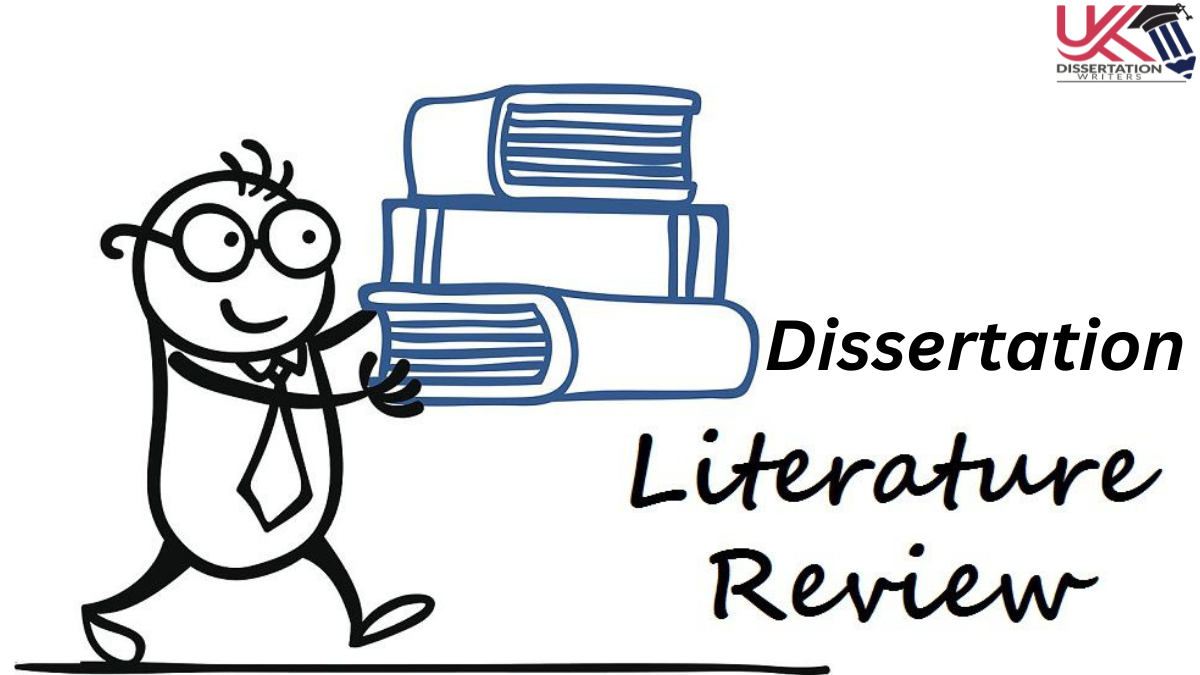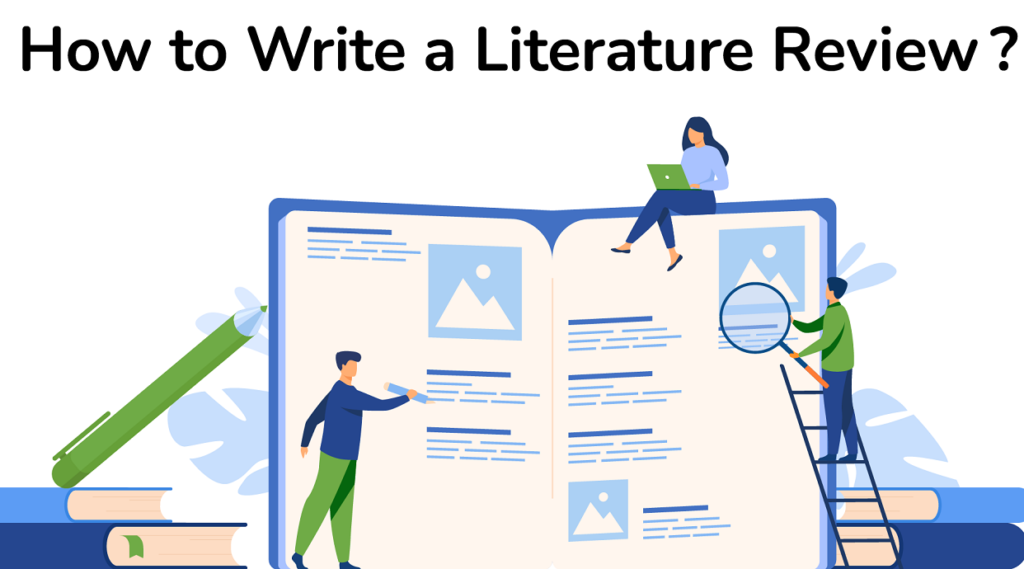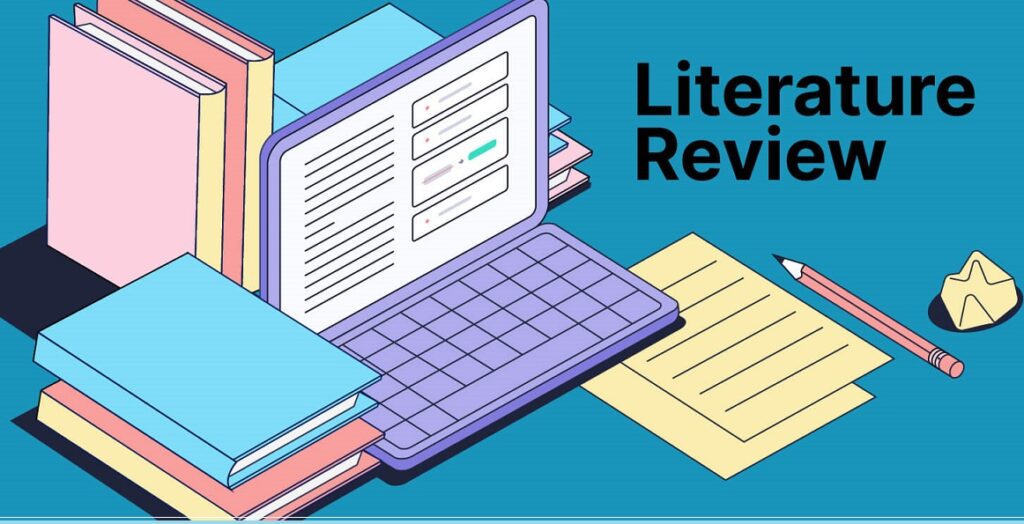
What is a literature review?
Essentially, what a dissertation literature review implies is that it critically evaluates the sources (literature) that you have examined or collected about your subject area and thus identifies a gap in the literature that your research intends to fill. Due to its variable nature, there are many misconceptions regarding the precise contents of a dissertation literature review. Dissertation writing typically demands you to critically engage with the text to express your positive or negative ideas. However, it can be as simple as summarizing key sources in many situations.
How would you interpret a specific source? Does this reading represent a significant departure from other perspectives found in the literature? In a literature review, this kind of critical engagement is expected of you. While a summary typically summarizes the main arguments presented in a source or sources, the expectations for a literature review go beyond this.
A literature review has the potential to offer a fresh perspective on a well-established research paper, or it can incorporate both new and existing interpretations, highlighting a “gap” in knowledge that needs to be addressed. Furthermore, a literature review can provide a comprehensive and critical overview of the intellectual advancements in a particular field, often focusing on prominent and contentious debates.
In certain cases, a literature review may also involve evaluating a source and informing readers about its credibility, relevance, and applicability to the research topic. “In a literature review, you’re aiming to summarize and provide a critical analysis of the research arguments you have found in your readings, without making new contributions to the literature. Hence the term: “literature”.”
Is a literature review really necessary?
Now that we understand what a literature review is, the next step is to grasp its purpose. Whether we like it or not, a literature review is a crucial component of any academic writing. It shows your tutor or reader that you have a comprehensive understanding of the sources related to your research area or question. The purpose of the literature review, despite its seemingly random nature, is to convince the person reading and grading your work that the topic you have written about is pertinent and that your arguments are sound. To put it briefly, a literature review is crucial, and you should take the time to do it well.
How do you write a dissertation literature review?

Below is a list of the key steps for your dissertation literature review. The next part of the blog will have all these steps broken down into smaller sections so that you can follow them easily. Start by identifying sources you want to use in your review paper; read and reread them later. Afterward, consider gaps in the research or literature that need to be filled using those reports or sources respectively before compiling your critique based on materials prepared during earlier stages of this process.
Note that the following text is intended for the use of our students and we are aware that some of these methods may not suit everyone.
Source Identification: To craft an effective literature review for your dissertation, it is crucial to have a clear understanding of the sources you intend to review. If your tutor hasn’t provided a formal reference list, refer back to the techniques we previously recommended. Ensure that your sources are well-balanced, including an ample selection of books, academic journals, and reputable scholarly publications. To assist in selecting appropriate sources, consider the parameters and objectives of your research.
- What do you hope to discover?
- Which theoretical issues or perspectives do you plan to address in your literature review?
- What about your methodology?
- Will you primarily focus on qualitative or quantitative studies or a combination of both?
These guiding questions should help you in choosing your sources, and remember that the abstract of a source is a valuable tool. A quick scan of the abstract and its keywords often provides an indication of its relevance to your research. While identifying your sources, it is essential to maintain a list to avoid losing focus due to the vast scope of the internet.
Reference tools like Mendeley allow you to store your sources online and through a desktop app, providing an excellent way to organize your bibliography. The citation tools associated with these programs also allow you to easily export citations in your preferred format when needed. They will save you countless hours of struggling to correctly apply referencing styles such as Harvard or APA.
Reading Sources: With your sources organized, it is time to read through them. Although it may feel unnatural, it is most effective to read in stages, as outlined below: First, skim through all the texts to gain a general understanding of their content and arguments. This will help you determine which sources you want to focus on in your review. During the second stage of reading, take a more critical and in-depth approach to your sources.
Take extensive notes, be critical, and ask questions. What is your academic opinion on the text? Do you have any comments on the methodological approach, theoretical arguments, or general hypotheses? Make sure to record these observations. This approach ensures that your literature review goes beyond mere summarization and encourages a clear line of argument, resulting in a logical and coherent piece of work.
Identifying Research Gaps: When writing a dissertation literature review, it is crucial to identify the research gap. This becomes particularly important if your review is part of a research proposal, as it demonstrates the relevance of your research and the intention to fill that gap. Additionally, identifying the research gap showcases strong critical analysis skills, which can earn you extra points.
To identify the research gap, it is essential to understand what it entails. A research gap refers to an unanswered research question, perspective, or problem within the existing literature of a particular field of study. Identifying the research gap highlights the originality of your research, indicating that you are not simply rehashing existing studies. It also demonstrates your awareness of the current state of literature in your chosen field, showcasing the effort you have invested in your review.
Many students, especially at the postgraduate level, find it challenging to identify research gaps in their subject area. For postgraduate research papers, identifying research gaps and formulating research questions to address them is a crucial aspect of the paper. Overcoming this difficulty can be achieved through various approaches:
Start with Reading
Begin by reading key articles in your research area. Keep in mind that you may need to go through numerous articles to find the ones most suitable for your research. Conducting a keyword search on Google Scholar can provide a quick overview of available literature. Other valuable sources include databases like JSTOR or Wiley Online Library. You can further expand your sources by exploring related articles or examining papers that have cited your initial source.
Abstracts and recommendations
Reading the abstract is often a good starting point to gain an understanding of the article’s content. Additionally, examine the introductory and concluding paragraphs as they usually provide information on the research’s aims, outcomes, and recommendations for future studies. These recommendations often indicate research gaps in the literature. Another approach is to immerse yourself in as much literature as possible on your research subject while considering which areas still require further exploration – this can help identify research gaps.
Literature Review Writing Guide: A Comprehensive Overview

Writing a literature review can be a challenging task, but with careful planning and organization, you can create a coherent and insightful piece of work.
Here is a step-by-step guide to help you through the process:
- Familiarize Yourself with Sample Literature Reviews: Start by reading sample literature reviews in your subject area. These examples will provide you with an understanding of existing debates and themes. Pay attention to the academic language and formal style used. Additionally, examine the references cited in these samples, as they can lead you to more relevant sources.
- Narrow Down Your Topic: To make your literature review manageable, narrow down your topic as much as possible. Remember that there are numerous perspectives and sources on any subject. Focusing on a specific aspect will allow you to write a more coherent and focused review. Clearly state the focus of your work in the introduction.
- Use Current Sources: If you’re reviewing scientific work, ensure that your sources are as current as possible. Scientific research evolves rapidly, and older sources may be outdated. However, in the social sciences, classic theoretical works are often relevant. Strike a balance between classic theories and current approaches to demonstrate how perspectives have evolved.
- Organize Your Work: Organizing your literature review goes beyond the basic introduction, body, and conclusion structure. Consider the following structure for your review:
- Write the paragraphs of the body Once you have settled on the approach to writing your body, you must now write each of its paragraphs in a way that is in keeping with academic conventions. Consider this paragraph from a literature review about stakeholder participation in environmental management, to clarify the discussion that follows:
Despite the rhetoric and the concerns that have been expressed, there have been few attempts to investigate the validity of the many claims that have been made for stake-holder participation (Webler, 1999; Beierle, 2002; Brody, 2003; Blackstock et al., 2007). The few attempts that have been made have tended to focus on evaluating the process rather than the outcomes (e.g. Beierle, 2002; Renn et al., 1995; Rowe and Frewer, 2000).
This may be partly due to the challenge of selecting appropriate evaluation criteria and data collection methods. Blackstock et al., 2007 argue that the evaluation of participatory processes should itself be participatory, with stakeholders selecting and applying the evaluation criteria. However, this is not straightforward. Webler and Tuler (2006) found strong differences of opinion between participants that they selected from ten case studies, about what constituted a “good” participatory process.
As the example above suggests, a dissertation literature review must be written using a formal and academic style. Also, note how sources have been grouped according to both arguments and themes. Remember we noted that the process of grouping sources in the body of your literature review is never a linear one? You will often use a combination of the approaches that we have discussed.
Ensure that your writing is concise, coherent, and devoid of any personal or strong language. Avoid any phrases like, “I hate X’s work”; a more academic way of stating your disagreement would be to simply state: “I would argue against X’s position that…”, or “X’s argument is inconsistent with the evidence because…”, or “X’s arguments are based on false assumptions because. In the sample paragraph above, notice the use of words like “argue” – this is a good academic alternative to more commonplace words such as “says”.
Other good alternatives include “states”, “asserts”, “proposes” or “claims”. More academic options include “opine”, “posit”, “postulate”, or “promulgate”, however, some tutors and readers find these words to be too ‘heavy’ and archaic, so ensure that you are familiar with the writing standards in your institution.
If your writing is tailored to a peer-reviewed journal, it’s worth having a look at articles within that journal to get a sense of the writing style. Most tutors will provide a guideline on writing styles, and you must adhere to this brief. You will often be required to also use the third person when writing a literature review, thus phrases such as “this paper argues” or “this paper is of the view that…” are appropriate.
There are exceptions at the post-graduate level or generally – like when you have conducted your own primary research or published your work widely – which give you the academic authority to boldly make claims. In cases like these, the use of the first person is suitable and you may use phrases such as “I argue” or “I propose”.
Remember also to generally use the present tense when referring to opinions and theories (although in the context of specific research experiments, the use of the past tense is better). Beyond the use of the academic terms suggested above, ‘linking’ words are also particularly important when writing a literature review since you’ll be grouping a lot of writers together with either similar or divergent opinions. Useful linking words and phrases include: similarly, there are parallels, in convergence with… When there is disagreement, you may want to use any of the following: However, conversely, on the other hand, diverges from, antithetical to, differential from…
Write the conclusion The conclusion of a dissertation literature review should always include a summary of the implications of the literature, which you should then link to your argument or general research question.
Some final notes The overall structure of your literature review will be largely based on your research area and the academic conventions that are in line with it. Nevertheless, some essential steps apply across all disciplines and that you should ensure you follow: Do not simply describe the opinions of writers Analyse, and ensure that your analysis is critical (what have the writers missed; where does your opinion sit with theirs, etc.). Structure the body of your argument using various techniques Your structure should be organized based on thematic areas, key debates or controversial issues, and according to methodological approaches.
Keep your review dynamic, but coherent. Remember to identify literature gaps and link them to your research. Use ample evidence This is extremely important and forms the very essence of a dissertation literature review. You must refer to various sources when making a point; see the sample paragraph above for an example of this. Your arguments and interpretation of a research topic must be backed by evidence.
Do not make baseless claims, as a literature review is an academic piece of writing and not an opinion piece. Be very selective Not every piece of research has to be reviewed. If you are determined to show that you are aware of the available literature out there, try writing techniques such as: There is robust literature available concerning the migration patterns of Syrian refugees. Notable works include X(2015), y (2013), Z (2014).
Once you have acknowledged these works, you do not have to review them in detail. Be selective about the sources that you will discuss in detail in your review. Do not rely too much on direct quotes Only use them to emphasize a point. Similarly, don’t rely too heavily on the work of a single author. Instead, highlight the importance of that author in your research and move on. If you need to keep going back to the work of that author, then you need to link those discussions with your work.
Do not simply provide a summary of the author’s work. In what ways does your work agree or disagree with his/hers? Be critical. Make your voice heard Yes, the whole point of the literature review is to provide a critical analysis and summary of the viewpoints out there, but a critical analysis does include the fact that you need to make your opinion known in the context of the literature. Note how skillfully, in the earlier sample paragraph by Reed (2008), he weaves his opinions with references. Read back over the sample and try to perfect this skill.
